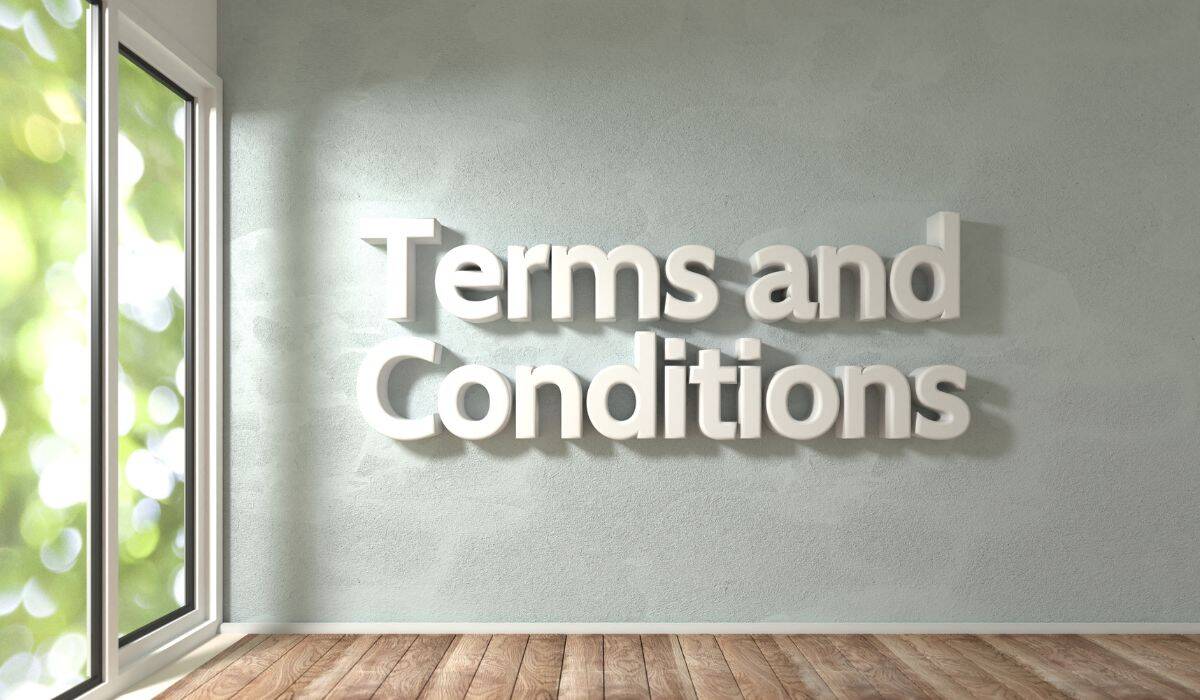As of early June 2025, we’re seeing starting interest rates around 5.42% for many types of commercial properties, while retail, industrial, and office space loans are often priced between 6.83% and 7.00%.
Rates like these can be the deciding factor for a deal’s success or failure, especially if you’re eyeing long-term financing.
From our experience, getting a grip on 20 year commercial mortgage rates is one of the smartest moves investors, business owners, and advisors can make when planning out a commercial purchase or refinance.
This guide breaks down what impacts your interest rate, how to plan your monthly payment, and which loan terms help you keep more cash flowing through your property, not out the door.
We recently covered commercial investment property loans, which focused more on short-term options and property-specific lending strategies. Coming up, we’ll dig into how to secure a conventional loan for investment property.
And if you’re looking for a broader view of what lenders offer, our guide to commercial real estate bank loans has the full picture.
Ready to figure out which financing options actually work for your goals in 2025? Let’s get into it.
Short Summary
- 20 year commercial mortgage rates currently start around 5.42%, depending on property type, credit profile, and lender.
- Several factors influence your final rate, including loan-to-value ratios, property type, and the current interest rate environment.
- Commercial mortgage calculators help estimate monthly payments, debt service, and cash flow impacts before applying.
- Knowing your lender’s qualification standards—like DSCR, down payment, and documentation—is key to loan approval.
- Strategic financing can improve long-term returns through smart loan structuring, refinancing, and leveraging equity.
Understanding Current 20 Year Commercial Mortgage Rates And What Affects Pricing
There’s a lot that goes into pricing a commercial mortgage, and we’re not just talking about advertised numbers.
To understand how lenders arrive at your actual interest rate, we’ve got to break down what’s driving current mortgage rates, the key factors that influence pricing, and how to position yourself for the best deal.
Current Market Rates And Benchmarks
Right now, commercial real estate loan rates are starting around 5.42% for many property types. But retail, industrial, and office properties? We’ve seen them priced anywhere between 6.83% to 7.00%, especially when the property is located in a pricier metro.
Two of the big influences are the prime rate and the secured overnight financing rate (SOFR). Lenders use these as baselines to calculate spreads, so when either ticks up, your rate usually does too.
For instance, a borrower look at a loan with one bank offering 6.25%, while another, factoring in SOFR changes, quoted 6.75% for the same building type. Timing matters more than people realize.
Key Factors That Affect Your Interest Rate
Your property type plays a big role. On average, multifamily properties tend to get better pricing, around 0.25% lower than office buildings.
Lenders also review your credit score and overall borrower’s ability to repay. Let’s say someone with strong financials and a high debt service coverage ratio (DSCR) walks in; they’ll likely land a better rate than someone with a weaker file.
We’ve seen how the loan to value (LTV) ratio affects this, too. A borrower putting down 30% on a commercial property may get a lower rate than someone barely hitting 20%. A stronger down payment often makes lenders more comfortable.
Regional And Lender Variations
Lenders in different areas don’t always price the same. Some local credit unions offer better deals than national banks, especially for owner occupied properties. In contrast, debt funds might be more flexible with non recourse loans, but often at higher interest rates.
National association lending programs sometimes come with more favorable terms than regional banks. Approvals can be slower, though.
Comparing Financing Options
We usually look at both fixed rate and variable options side-by-side. Fixed rates give stability, while variable ones may start lower but come with more risk long-term.
Small Business Administration (SBA) programs are great for owner occupied properties, especially if you’re buying a building for your small business.
When reviewing offers, check if it’s recourse or non recourse. That difference affects your personal liability and sometimes your rate.
Market Timing And Rate Forecasts
Lately, we’ve been advising borrowers to keep an eye on rate forecasts. Some experts expect mortgage rates to stay flat for the rest of 2025, though inflation data could change that quickly.
If you’re thinking about locking in, consider this: One borrower secured a rate just before the last rate hike, saving thousands over the loan’s life.
Timing your new loan with lender promotions or seasonal slowdowns can also make a difference. Late Q3 is sometimes quieter, which can lead to better offers.
How Commercial Mortgage Calculators Help Plan Your Monthly Payment Strategy
When you’re sizing up a commercial real estate loan, it’s not just about what you qualify for. More likely, it’s about what your property can support month to month.
This is where a good commercial mortgage calculator comes in handy. It helps estimate your monthly payment, clarify cash flow, and give you the clarity you need before signing on the dotted line.
Essential Calculation Components For Accurate Estimates
A few pieces of info are non-negotiable for a reliable estimate:
- Loan amount (most lenders start at $1M minimum for commercial financing)
- Down payment (usually 20–30% of the total commercial property price)
- Interest rate
- Amortization period (which is often 20 to 25 years, even if your loan term is shorter)
The difference between your amortization schedule and your loan term matters more than people think. A 20-year term might still have a 25-year amortization, creating a balloon payment at the maturity date. That’s a surprise you don’t want.
Understanding Payment Structures And Cash Flow
Once you input the basics, the calculator breaks down your monthly mortgage payment, which includes debt service. That figure plays a big role in your property’s debt service coverage ratio (DSCR).
Let’s say a property earns $20,000 a month in net income. If your monthly payment is $14,200 (as in a $2M loan at 5.75%), your DSCR is just above 1.40x—comfortably above the usual minimum DSCR requirement of 1.20x.
Lenders check if the property income supports payments, not just your financials. If your LTV ratio is too high or income is thin, you may get hit with higher interest rates or lower maximum loan approval.
Real Payment Scenarios That Matter
In practice, tools can help compare options, like:
- 20-year vs 25-year amortization period
- Factoring in closing costs and additional fees
- Evaluating if a cash out refinance makes sense based on projected cash flow
- Seeing how prepayment penalties affect long-term costs
They’re especially useful when planning for multiple properties or doing portfolio lending. You can stress-test your scenarios before making moves.
Why Calculators Are More Than Just Numbers
For example, an investor might run the numbers on a warehouse purchase and realize the estimated monthly payments will stretch their margins too thin. They pivot to a smaller property with stronger cash flow.
Another might discover that a higher down payment gets them lower monthly payments, saving more over time.
Using a commercial mortgage calculator is about making smarter decisions, not just plugging in rates. It’s one of the easiest ways to feel prepared before you ever meet a lender.
Loan Terms, Qualification Requirements, And Working with Lenders
Before applying for a commercial real estate loan, it helps to understand how deals are structured, what lenders look for, and the kinds of extra costs that show up along the way. The more prepared you are, the smoother the process.
Standard Loan Structure And Payment Terms
Most commercial mortgage loans follow a fairly standard setup:
- Amortization schedules typically run 20–25 years
- Actual loan terms are usually shorter—think 5, 7, or 10 years
- Many loans come with prepayment penalties like yield maintenance or step-downs
- Fixed rate periods may last only part of the term, after which refinancing becomes key
- We’ve seen investors time a refinance around year five when market rates dipped. It can save serious money if done right.
Qualifying As A Borrower And Evaluating The Property
Lenders usually ask for full documentation. That includes:
- Two to three years of tax returns and financials
- Rent rolls and leases (if applicable)
- A business plan if the property is owner occupied
- Personal and business credit histories
They’ll want to know if the deal works on paper. For investment properties, they’ll look hard at net operating income and vacancy risk. Lenders love stability.
Property Eligibility And Due Diligence
Not every property qualifies. Common requirements include:
- Usage must meet commercial standards—retail, office, industrial, or multifamily
- Appraisals and environmental assessments (especially for older buildings)
- Proof of adequate insurance and often third-party property management
If a buyer is purchasing a former gas station, for example, an environmental report might be mandatory before moving forward.
Additional Costs Beyond The Rate
Don’t forget the extras. A few standard ones:
- Closing costs and third-party fees usually run 2–4% of the loan
- Legal fees, title insurance, and appraisal costs
- Some bank requirements include upfront deposits or lender points
These can add tens of thousands to the deal, so always include them in your total cost analysis.
Working With Lenders And Navigating Options
When comparing offers, cast a wide net.
- Get quotes from banks, commercial mortgage brokers, and credit unions
- Direct relationships with lenders can help for simpler deals
- Brokers may find better terms, especially for complex properties
It helps to be realistic about the timeline. From application to funding, 45–60 days is pretty normal. But prepping your documents early makes a huge difference.
Strategic Financing Approaches And Maximizing Your Commercial Real Estate Investment
A strong financing strategy goes beyond simple approval. It requires careful loan structuring to foster growth, minimize risk, and enhance long-term value. Let’s break down some smart moves that experienced investors use.
Structuring Loans For Stronger Terms
A well-structured loan can save money right out of the gate.
- Stretching your amortization period can reduce monthly payments
- A larger down payment may result in a better interest rate
- Choosing a single large loan over several smaller ones can reduce administrative fees
One investor, for instance, opted to put 30% down instead of 20% and ended up with a lower rate that shaved off thousands in interest annually.
Refinancing And Alternative Lending Options
Refinancing isn’t just for rate drops. It’s a powerful way to reposition your portfolio.
- A cash out refinance can unlock equity for additional property purchases
- Debt funds may offer more flexibility than banks for non-traditional assets
- Owner occupied properties can sometimes qualify for SBA financing with longer terms and better rates
For instance, someone running a dental practice can refinance into an SBA 504 loan and use the savings to buy a second office location.This move can be a game-changer for growth.
Long-Term Strategy And Portfolio Planning
Staying ahead means thinking beyond the next deal.
- Look into portfolio lending if you plan to acquire multiple properties
- Track current mortgage rate trends to time new applications smartly
- Always factor tax benefits and depreciation into your long-term return strategy
Market watchers might plan for a maturity date refinance two years ahead, especially if they sense tightening lending standards coming.
Leveraging And Exit Planning
Maximizing returns means knowing when to use your assets strategically.
- Reinvest equity from stabilized properties into higher-yield assets
- Consider property sales or refinances based on appreciation timelines
- Use existing commercial real estate loans to support business expansion efforts
Every property in your portfolio should serve a purpose, whether it’s growth, cash flow, or leverage for the next move.
Final Thoughts
Keep it simple: understanding 20 year commercial mortgage rates, loan structures, and financing strategies gives you real control over your investment decisions.Don’t just take the first offer—run the numbers, compare lenders, and think long-term. That’s how smart investors protect cash flow and grow their portfolio. Ready to explore more options or take the next step? Head over to our homepage and let’s get started together.
Frequently Asked Questions
What Are Typical Down Payment Requirements For Commercial Property Loans?
Down payments usually range from 20% to 30%, though stronger borrowers may negotiate better terms. The higher the down payment, the lower the lender’s risk—and potentially your interest rate.
How Can A Commercial Mortgage Calculator Help Me Plan?
It lets you estimate monthly payments, cash flow, and total debt service. You can plug in different rates, terms, and down payments to model real-world outcomes before committing to a loan.
What’s The Difference Between A 20-Year And A 25-Year Amortization Schedule?
A 25-year amortization results in smaller monthly payments, but you’ll pay more in interest over time. A 20-year term costs more per month but builds equity faster and lowers long-term interest expense.
When Should I Consider Refinancing A Commercial Loan?
Refinancing makes sense if you can lock in a lower rate, extend your term for better cash flow, or pull equity out to reinvest. Just make sure you weigh closing costs, prepayment penalties, and current market rates.






